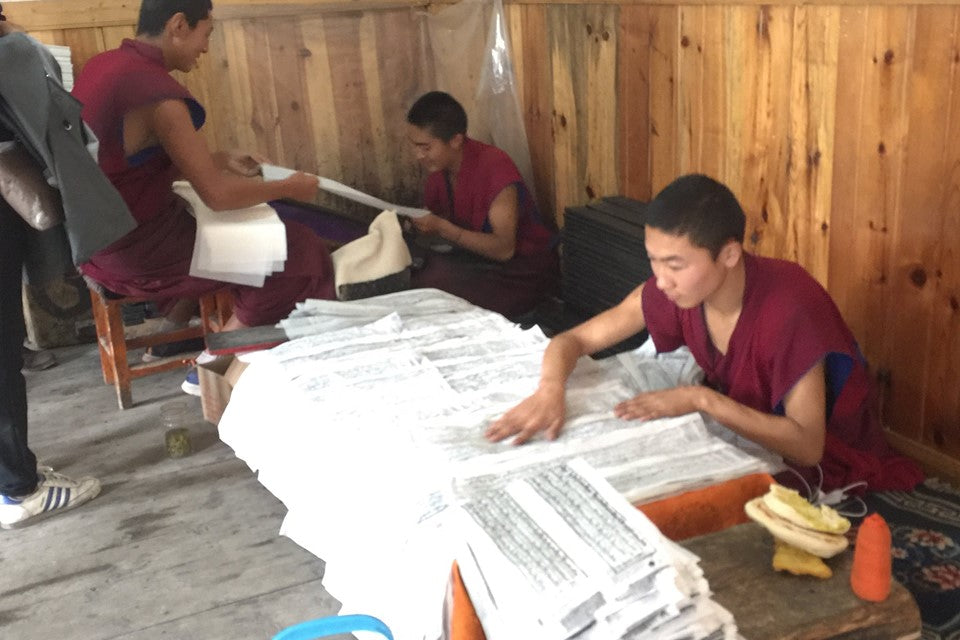A Visit to Labrang
|
80 km from the Norlha workshop is the town of Labrang, or Serchu, dominated by Labrang Tashikyil Monastery, a sprawling complex the size of a small town that fills a narrow valley flanked by wooded hills. Labrang Tashikyil was founded in 1709 by the first Jamyang Shepa, Ngawang Tsöndrü under the sponsorship of a Qosot Mongol Prince, and is Tibetan Buddhism's most important monastery town outside the Tibetan Autonomous Region, a place of learning for over two thousand monks and the focus of pilgrims who congregate from all over the Tibetan Plateau to pray and shop. A tour of Labrang Tashikyil includes a visit to the main prayer hall and several of its 18 assembly halls, the printing press where traditional loose leaf books are printed from wooden blocks, the Medical College, the Golden Stupa which houses the remains of the previous incarnation of Gonthang Rinpoche, a museum and a hall that displays butter sculptures made from the Monlam Festival that follows the New Year celebrations. One can wander the many streets lined with monks houses, pass by the walled debate courtyard or circumambulate the monastery, a pilgrim path 3 km long that winds counterclockwise and begins with a row of prayer wheels. There is a ‘fast’ lane for the more eager pilgrim, usually senior citizens come to settle in Labrang after a life as nomads and who keep count of their rounds and their merits on their prayer beads. Labrang Tashikyil is foremost a center of learning for its monk population, distributed in six Colleges: The Debate College, which is the largest and the first to be established, the Kalachakra College, the Upper and Lower Tantric Colleges, the Medical College and the Hevajra College. Monks come from smaller monasteries come to learn at Labrang, from as far as Mongolia. Many of the monasteries in the region are affiliated to Labrang, making it a point of focus. Next to Labrang Monastery is the Ngagpa Tantric college for lay practitioners and a nunnery. Further on are villages and the old residence of Jamyang Shepa, part hotel and part abandoned complex. (the present incarnation had a new palace built closer to the monastery called the Norzin Podrang. One can also pay a visit to the tsampa mill where the monks On the other side of the Monastery, at the end of the lingkor marked by a white stupa, the town begins. Face the Norlha store, then turn left into the main street that takes you from one end of town to the other. Originally a single street, it begins with Tibetan hotels, the White Stupa, The Tara Hotel, the Overseas Hotel (established in the 80’s by a Swill Tibetan), shops and further down the Chinese hotels with their glass doors and gleaming brass. In the last five years an Opera house in the shape of a lotus has sprouted along with a street populated by restaurants offering Indian and Nepales food, and, at the very end some high rise apartment complexes. |

































